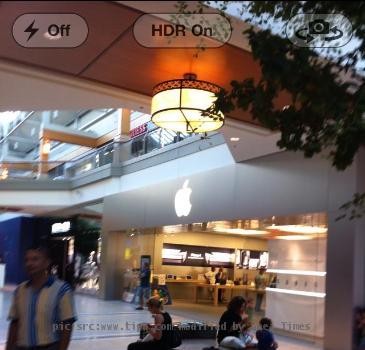

- #Screensharingmenulet for mac#
- #Screensharingmenulet mac os x#
- #Screensharingmenulet install#
- #Screensharingmenulet update#
- #Screensharingmenulet mac#
Update #2: I have been using this setup for the past week (using Port Mapping for port 5900, not the DMZ), and have had a 100% success rate connecting BackToMyMac using my DynDNS. As my Dad taught me long ago, "A good strategy is that which works." I can't explain why using a DynDNS domain name works more reliably than the built-in Bonjour sharing/connecting method, but after days of unsuccessfully trying to connect to my work computer, I have been able to connect via DynDNS without fail. I haven't actually tried that, but it's another option.
#Screensharingmenulet mac#
If all else fails, you might want to try another direction: Back to My Mac through iChat. This will still require that you use DHCP Reservations, as above. In AirPort Utility you can find Port Mapping configuration under "Internet" and then click on the "NAT" tab. As one commenter suggested, you could even map different ports to forward to port 5900 on various Macs behind the same DynDNS hostname. If you can block all access to your Mac except for that one port, it obviously reduces the number of potential ports that a malicious attacker could try to access your Mac. That said, you can try using Port Mapping or Port Forwarding to forward to port 5900 (the port Screen Sharing uses).
#Screensharingmenulet mac os x#
I don't know of any evidence that that is true - "gut instinct" is not evidence - assuming the Mac OS X Firewall is enabled. Update #1: Several comments below suggest that putting your Mac as the "Default Host" or "DMZ" will make your Mac insecure. If it doesn't say "Firewall: On" be sure to enable it. Launch System Preferences and click on the Security panel followed by Firewall tab. Mac OS X has a firewall, but it is not enabled by default. Warning: once you do this you are bypassing your router's firewall. Check your router's documentation if you're not sure.) On the Airport Express this is called the "Default Host" and is found on the Internet Tab under "NAT" but other routers have different names for it (I believe Linksys routers refer to this as the "DMZ" host. After you have done that, tell the router to send all traffic directly to that computer. Essentially what you are doing is telling the router to always assign the same IP address to the computer you are trying to access. First, you're going to want to setup a DHCP Reservation for the computer you are trying to connect to. If it still doesn't work, I have a few more suggestions, but I warn you, we're going to get a little technical here. ) and check the "Add to My Computers" box so it will appear in the My Computers sub-menu in the future. Click on the menu bar icon, select "New Connection." and then enter your DynDNS hostname (i.e. ScreenSharingMenulet will remember hosts that you have previously connected to, meaning that you don't have to re-type the hostnames.
#Screensharingmenulet install#
You could launch Screen Sharing.app directly from /System/Library/CoreServices, but a much better suggestion is to install the free ScreenSharingMenulet which will sit in your menu bar. Once you have it running, make sure that it has updated, and then switch to your other Mac. You can get up to five at no cost.)īy subscribing, you are agreeing to Engadget's Terms and Privacy Policy. (If you want to do this for more than one computer, you will need a different DynDNS hostname for each computer.
#Screensharingmenulet for mac#
There are scads of DynDNS domain names available, but for the purposes of this example, let's assume that your domain name is .Īfter you've signed up for your free account and chosen a hostname, download and install the DynDNS Updater for Mac and install it on the machine you want to access via Back to My Mac. DynDNS gives you a free hostname which will go to your computer even when your IP address changes. Under the adage "nothing ventured, nothing gained," I took a chance and signed up for a free account with DynDNS. I don't think it's possible to get a "more compliant" setup, yet I still can't get it to work most of the time. At home I have an Airport Extreme Base Station (Wireless-N), and at the office I have an Airport Extreme Dual-Band model. To maximize your chances, you're supposed to use a supported router, but even that's no guarantee. We're used to products from Apple that "just work" but for most people most of the time, Back to My Mac "just doesn't."

Being able to remotely access your Mac from anywhere sounded like magic. Many folks were excited when Apple announced Back to My Mac as part of MobileMe.


 0 kommentar(er)
0 kommentar(er)
